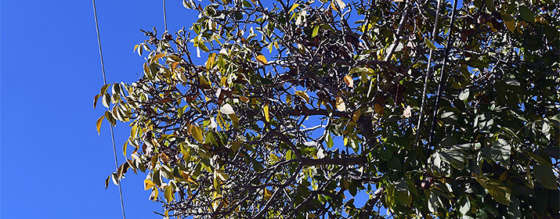Reducing Wildfire Risks
Safety is our highest priority. That’s why we work year-round to reduce wildfire risks. Some of these efforts seek to ensure that wildfires sparked by lightning, campfires or other outside causes don’t threaten electric reliability. But we also want to make sure that our own energized equipment doesn’t start a fire.
We inspect, repair and upgrade our transmission and distribution systems regularly to ensure their safe, effective operation. We also clear vegetation away from our equipment to reduce the chance that a wind-blown branch could contact power lines and start a fire.
Are you living in a risk-prone area for wildfires?
Enter your address in the search window below to learn whether it could be subject to a public safety power shutoff (PSPS) during periods of extreme wildfire risk. If your address is shown within an area covered with a blue overlay, it could be affected. Such interruptions would only occur as a last resort when other methods cannot adequately mitigate wildfire risks.
The bright blue areas on this map indicate addresses that could be subject to public safety power shutoff (PSPS) events during periods of extreme wildfire risk. The red lines, which can be toggled on and off, show the electric infrastructure that could be shut off during PSPS events. Sometimes those lines pass through areas that would not be affected by an outage that results from the shutdown of that equipment. So areas covered with a red overlay, but not a blue overlay, would not be subject to a PSPS event.
Public Safety Power Shutoffs
Despite these efforts, periods of extreme heat, strong winds and blowing debris could increase the risk that our facilities might spark a wildfire in certain remote, drought-stricken areas. If this risk becomes too great, we will proactively shut down those facilities – potentially interrupting electric service for some customers – until conditions improve.

This step, a Public Safety Power Shutoff (PSPS), is considered only as a last resort to protect public safety. PSPS events are part of a broader strategy to enhance community preparedness and resilience. We work closely with local authorities, emergency services, and community organizations to ensure that residents are informed and prepared for potential power shutoffs.
We will provide as much notice as possible before a potential PSPS event to minimize disruption. During an event, we will provide additional updates as we review and assess evolving conditions. We will seek to notify impacted customers by phone, email and text message and provide broader updates via our website, news media advisories and social media posts.
Be prepared. TEP expects that PSPS events will be rare. The great majority of TEP customers will not experience a service interruption during a PSPS event even when they do occur. Customers living in affected areas should:
- Ensure TEP has your updated contact information for outage alerts
- Plan for any medical needs.
- Make sure we are aware that you require a life-sustaining medical device or have a medical condition requiring continuous electric service. You can call us at 520-623-7711 to share this information
- Update your emergency plan and supplies
How do PSPS events work?
During wildfire season or at other times of the year as necessary, TEP will monitor wind speed, humidity levels, wildfire updates and other factors to determine if a PSPS is needed. If so, customers in affected areas can expect:
- Advance notification. Information and updates will be shared through several outlets, including email, text, phone calls, website updates and potentially through media advisories, which is why it's important that we have your current contact information.
- Prompt restoration – once it’s safe. The duration of an outage will vary based on weather conditions and any damage to our equipment that might require repairs.
If you are affected by a PSPS, we would appreciate your patience as we work to restore safe energy delivery in your area. Please see answers to frequently asked questions below.
Learn more about how we prepare for wildfire season. For real-time information about power outages, please download our mobile app or visit our outage map.

